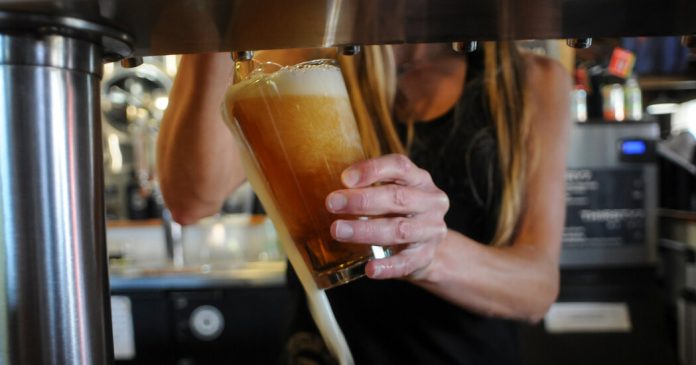Because the story goes, a very long time in the past in Bavaria, beer underwent a change. Darkish ale was a paler, gold-hued drink, and the beverage grew far more frequent across the time when a ducal edict restricted brewing to the winter months. The lager, as the brand new beer was referred to as, had begun its journey to world domination.
Centuries on, geneticists have discovered that the yeast chargeable for fermenting lagers is a hybrid of the normal brewer’s yeast and one other, cold-hardy yeast, Saccharomyces eubayanus. The lager yeast seems to be the results of an opportunity mating in a cold brewery, the place low temperatures allowed the hybrid to thrive.
However whereas brewer’s yeast is frequent sufficient, how the lager yeast’s different guardian wound up in Bavaria has been more durable to hint. It was first noticed within the wild in 2011, when biologists found the cold-loving yeast, S. eubayanus, dwelling fortunately within the forests of Patagonia in South America. Then there have been some tantalizing traces discovered within the Italian Alps, Tibet, western China and North Carolina.
To date, sightings in Europe have been nearly nonexistent. However in a paper revealed Wednesday within the journal FEMS Yeast, biologists reported that they had discovered S. eubayanus alive and properly, dwelling within the grime of the College Faculty Dublin campus in Eire. The discovering could present a key clue concerning the microbe’s travels: If different samples are discovered throughout Europe, we could get a greater image of what led to that fortuitous assembly in a chilly Bavarian cellar.
The Irish soil samples had been collected by Stephen Allen, an undergraduate who was taking a lab course at College Faculty Dublin run by Geraldine Butler, a professor of genetics, and her colleagues. When the staff bought a preview of what was dwelling within the grime, Dr. Butler had a powerful hunch that one of many yeasts was the long-sought S. eubayanus. A agency identification needed to wait till the microbe’s total genome was sequenced, a course of that took a number of weeks.
“I used to be type of sitting over the sequencer, ready for the information to come back out,” Dr. Butler stated.
Certainly, Mr. Allen’s samples yielded a pair of strains of S. eubayanus, they usually seemed to be from the identical department of the household because the variations present in Tibet and North Carolina.
The discovering matches with climactic modeling suggesting that Eire could be a hospitable atmosphere for the yeast, stated Chris Hittinger, a professor of genetics at College of Wisconsin — Madison, who was on the staff that discovered the yeast in Patagonia and never concerned within the present examine. What’s much less clear is why the yeast been so tough to seek out within the wild past South America, the place it grows plentifully in affiliation with beech bushes and is regarded as a local species.
S. eubayanus does appear to be much less considerable elsewhere, Dr. Hittinger stated, such that researchers need to rigorously domesticate yeasts within the lab have sufficient to sequence their genomes.
“I feel the invention in Europe now means that investing in that effort will likely be worthwhile,” he stated.
Unearthing S. eubayanus in additional locations could assist researchers begin to see how its genetic range varies throughout the planet, which might make clear how a yeast from South America made its means across the globe to assist jump-start lager brewing in Bavaria.
“There’s a query of the route,” Dr. Butler stated. “The Tibetan one is a barely nearer relative of the lager yeast than the Irish ones are,” suggesting that maybe the yeast bought to Germany by means of Asia — though it’s not possible to say with out extra samples.
The yeast might have traveled over land lengthy earlier than people entered the image, maybe hitching rides on birds and bugs, Dr. Hittinger stated.
For its half, Dr. Butler’s group will proceed looking its college campus for S. eubayanus. Members are additionally inquisitive about some extra sensible options of the organism.
“We’re to see what sort of beer it’s going to make,” she stated.


